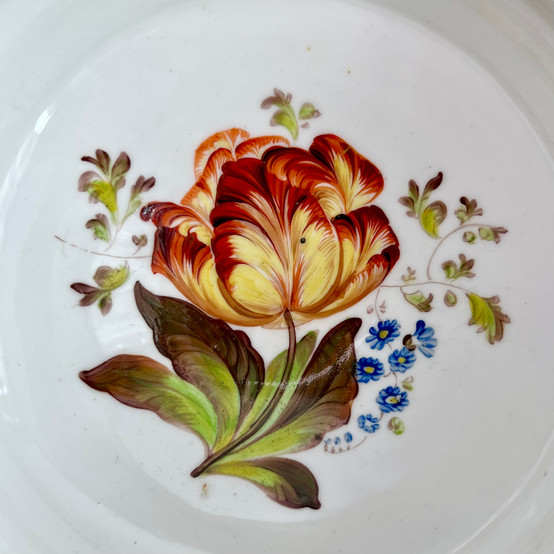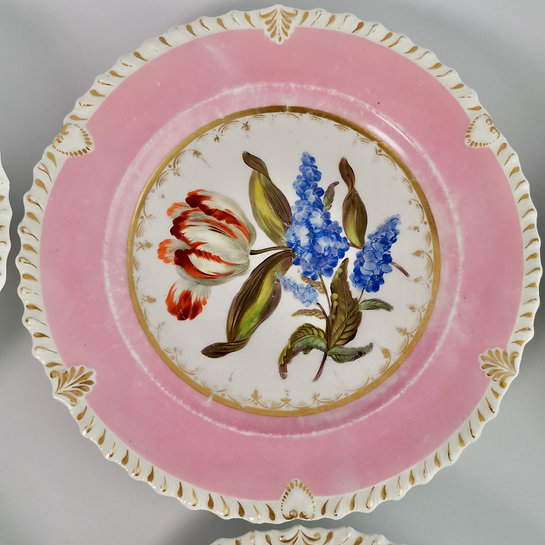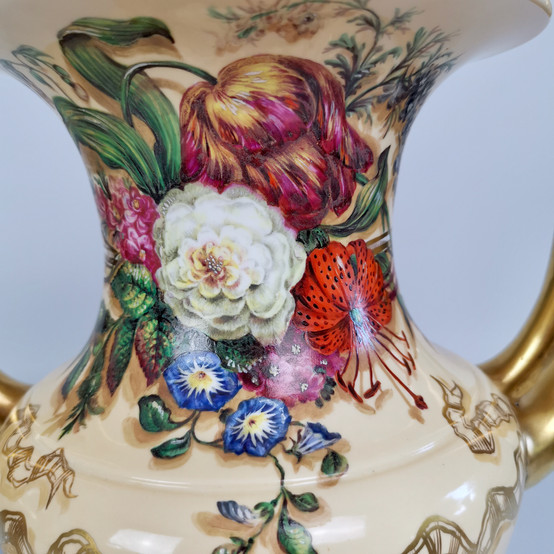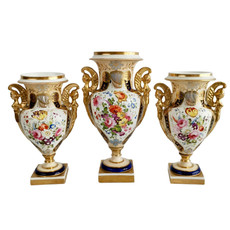Tulip Mania
- willa

- Apr 21, 2023
- 3 min read

After the long, cold winter we've had, spring is so very welcome. And what a spring! I have been working hard in my allotment, planting lots of vegetables but also delighting in a large patch of tulips that I had planted before the winter.

Then last week I sold a dessert service with some wonderful tulips on it (see these two images), and amazingly I had just picked a large bouquet of exactly the same tulips from my allotment. So let's talk about the tulip, the national flower of my childhood country, The Netherlands.
A native from Central Asia and parts of the Middle East, the tulip first came to Northern Europe in the 15th Century when European diplomats discovered it in their dealings with what we now call Türkiye (Turkey - did you know it changed its official name recently?). Soon, Europeans started to cultivate this beautiful flower. After the invention of the windmill, which allowed the Dutch to reclaim large, flat pieces of land from the sea, the Dutch started what is called Tulip Mania - a period in the Golden Age when tulips were grown in large quantities and widely traded for huge amounts of money.

The popular account of Tulip Mania is that the market crashed at some point, causing the first financial crisis. This actually never happened. There was a market, and it did grind to a halt, but the market was what in Dutch we still call "windhandel" or "Wind Trade"; no tulips or, in many cases, even real money traded hands; it was all speculation. When there was a sudden outbreak of bubonic plague, people all of a sudden stopped trading and that was the end of it.
However, tulips where there to stay, and today The Netherlands is still the main producer in the world.

One of the things that made the tulip so famous is the amazing mixed colours the Dutch brought in. Initially, this was an accident; tulips were infected with the "tulip breaking virus". Gradually, people learned how to breed these colours into the species and today the beautiful streaked colours of the "Rembrandt" tulip are the result of breeding rather than the virus.
The tulip has a lot of meaning for the Dutch. When I got my allotment a couple of years ago, I immediately knew that I would grow tulips; one thing I really miss in the UK is the availability of good flowers, which are expensive and often not very exciting. This year, it's paying off and I can't tell you the joy it gives me!
Another meaning tulips have for the Dutch is survival: when my mother was a child, it was war and there was a severe famine. There was a government-led drive to distribute all available tulip bulbs to the population as food, and many kids like my mother survived thanks to the tulip. The statement "Eat your vegetables and be glad to have them, we ate tulips in the war!" will bring a smile to any Dutch person of my generation - it's what we grew hearing when we were kids.

Did you know that in The Netherlands, we like to leave the tulips in the vase until they have completely fallen apart? It's that last stage, when they grow in all directions, get messy and wild and wonderful, that we love the most.

Back to porcelain... when English flower painters started to explore all the beautiful ways they could decorate porcelain, the tulip played an important role. But not just the boring single-coloured stiff tulips we see in the supermarket: proper Dutch tulips, with amazing colours and shapes, flowing and with gaping open mouths and oh so elegant and free. That's the tulips I grow and nothing makes me happier.
Where to find stock
You can find all my available items here, and if you want to stay up to date with new additions, find me on Instagram, where I put up pictures with a story several times a week.
Happy weekend, and go find some proper tulips! 🌷🌷🌷

Some of our best tulip decorations available:














































































Comments